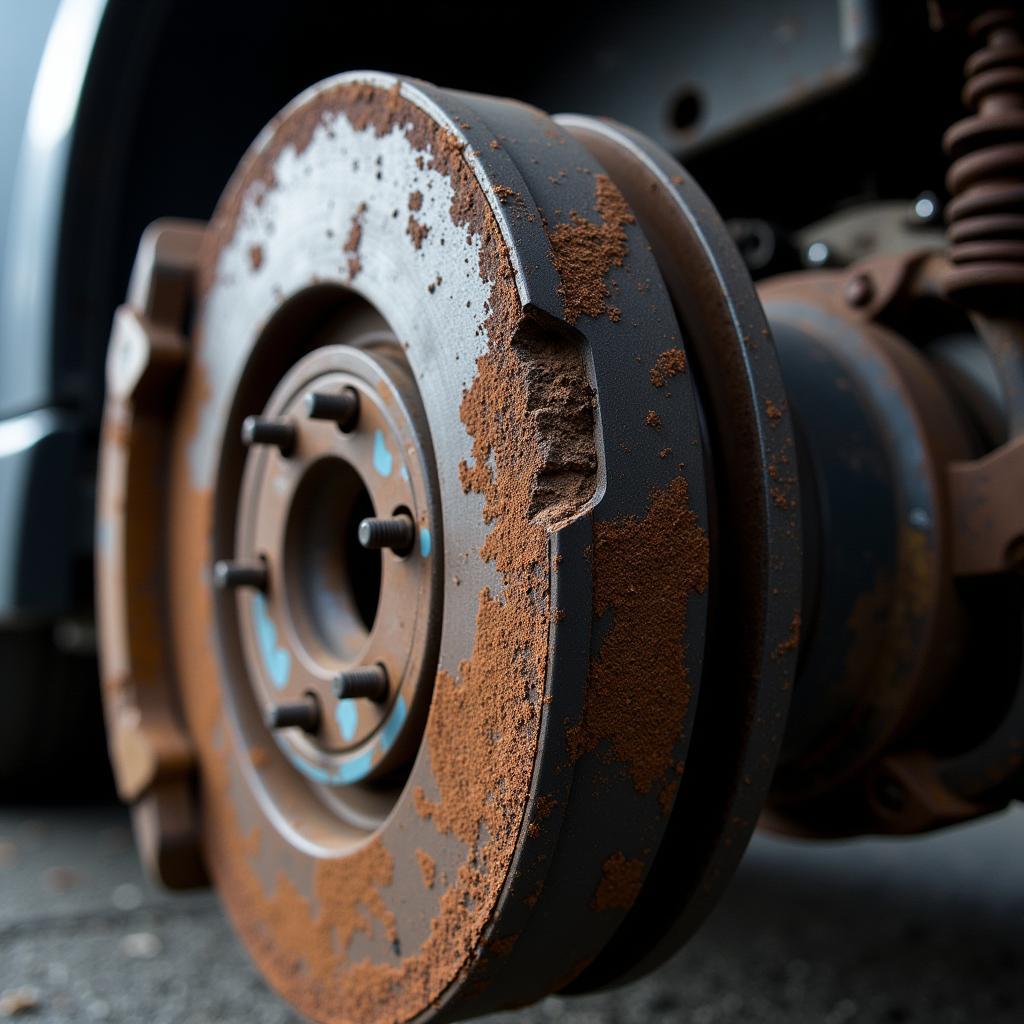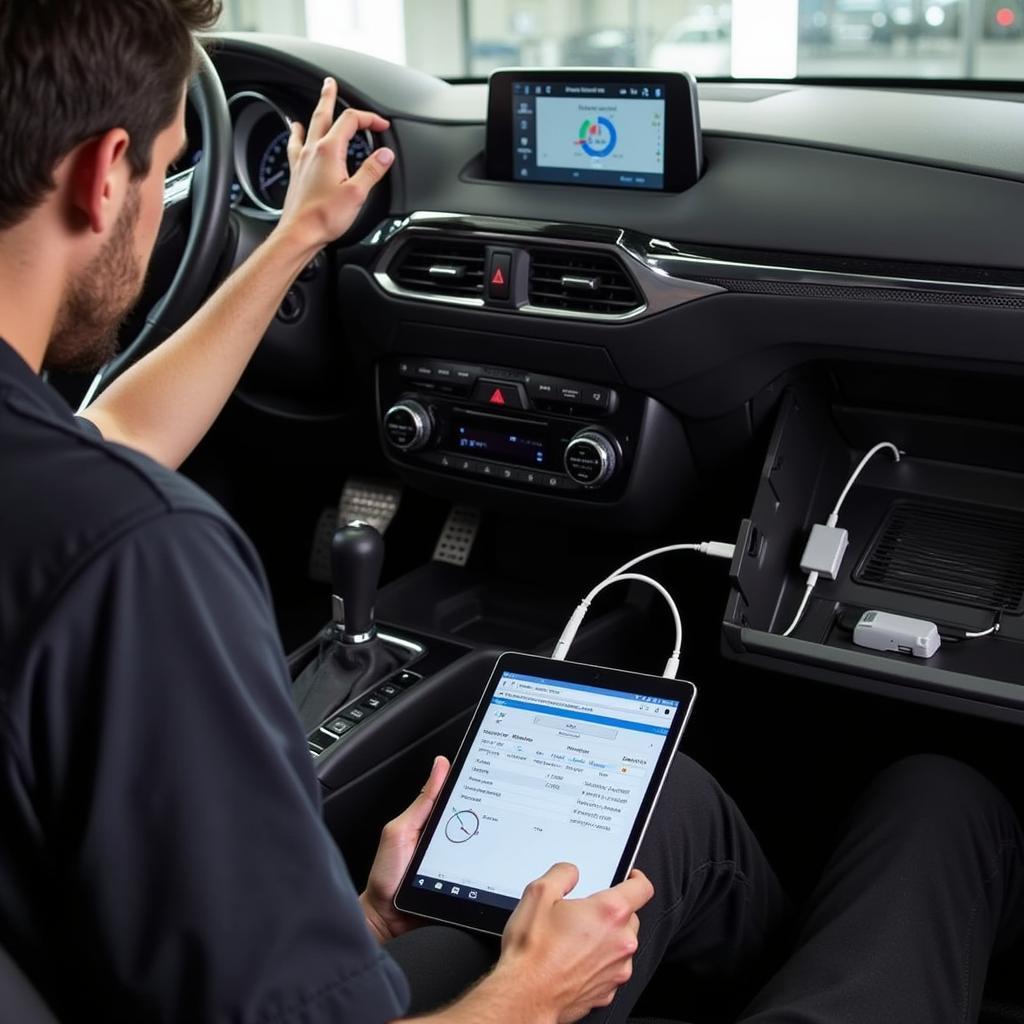The dreaded brake pad warning light on your E60’s dashboard. It’s an unwelcome sight for any BMW owner, but don’t panic. This article will guide you through understanding the warning, diagnosing the problem, and exploring your options for a fix.
Understanding the E60 Brake Pad Warning Light
Your E60 is equipped with a sophisticated sensor system designed to alert you of potential maintenance needs. The brake pad warning light, often a yellow circle with an exclamation mark inside parentheses, is triggered by one of two things:
- Worn Brake Pads: Your brake pads have worn down to a predetermined thickness, signaling it’s time for a replacement.
- Faulty Sensor: While less common, the sensor itself could be malfunctioning, triggering the warning light prematurely.
Diagnosing the Issue: Worn Pads or Faulty Sensor?
Before you order new brake pads, it’s crucial to determine if they are indeed the culprit. Here’s how:
-
Visually Inspect Your Brake Pads:
- Safely jack up your car and remove the wheel where you suspect pad wear.
- Examine the brake pad thickness through the inspection hole in the caliper.
- If you see less than 3mm of pad material, it’s time for new pads.
 Worn Brake Pads on a BMW E60
Worn Brake Pads on a BMW E60 -
Check the Brake Pad Sensor Wire:
- Locate the sensor wire leading to the brake caliper.
- A broken or damaged wire can trigger a false warning. If you spot damage, the wire needs replacement.
-
Use a Diagnostic Scanner (Advanced):
- Connect a compatible OBD-II scanner to your E60’s diagnostic port.
- Read the error codes related to the brake system.
- This will pinpoint the exact cause of the warning light, whether it’s worn pads, a faulty sensor, or another issue.
 Diagnosing a BMW E60 with an OBD-II Scanner
Diagnosing a BMW E60 with an OBD-II Scanner
Options for Fixing Your E60 Brake Pad Warning
Once you’ve identified the problem, you have a few options:
-
DIY Brake Pad Replacement:
- If you’re mechanically inclined, replacing brake pads is a manageable DIY job.
- You’ll need basic tools, new brake pads (and possibly rotors), and a service manual.
- Numerous online resources offer step-by-step guides for E60 brake pad replacement.
-
Professional Brake Service:
- Opting for a professional mechanic is recommended if you’re not comfortable with DIY repairs.
- A mechanic will have the expertise and equipment to efficiently diagnose and address the issue, ensuring your brakes are in optimal condition.
-
Remote Software Solutions:
- In some instances, a software reset might be necessary after replacing the brake pads or sensor.
- Some specialized services offer remote software installation and coding for BMW vehicles, including resetting brake pad warning lights.
Addressing the E60 Brake Pad Warning: FAQs
Q: Can I keep driving with the brake pad warning light on?
A: While you might not experience immediate braking issues, continuing to drive with worn brake pads is incredibly dangerous. It can lead to severe rotor damage, compromised braking performance, and potential accidents.
Q: How much does it cost to replace brake pads on an E60?
A: The cost varies depending on factors like DIY vs. mechanic, brake pad quality, and potential rotor replacement. Expect to pay between $150 – $400 for parts and labor.
Q: How often should I replace my E60’s brake pads?
A: Brake pad lifespan depends on driving habits and conditions. However, it’s generally recommended to have them inspected every 10,000 miles and replaced every 20,000-70,000 miles.
Ignoring the E60 Brake Pad Warning: A Risky Gamble
Remember, your brakes are crucial for your safety and the safety of others on the road. Addressing the E60 brake pad warning light promptly ensures optimal braking performance, prevents costly repairs, and most importantly, keeps you safe behind the wheel.

